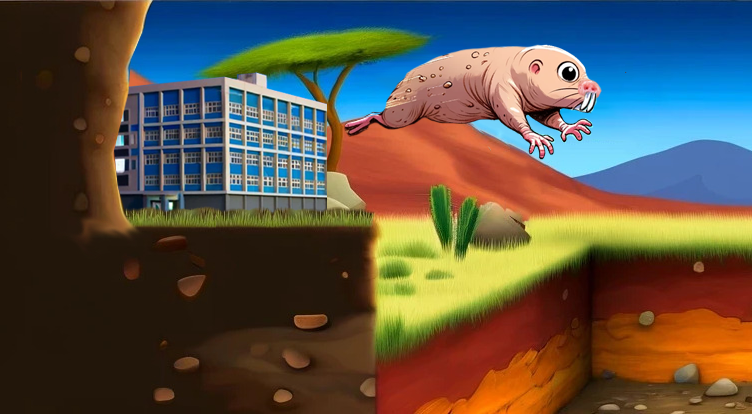
Into The
TUNNELS
A KNOWLEDGE GAME ABOUT NAKED MOLE RATS
ABOUT THIS KNOWLEDGE
TRANSLATION PROJECT
BY OLIVIA HIORT
In our psychology seminar course, I’ve created an engaging and educational interactive game that allows you to delve into the fascinating world of naked mole-rats, exploring their unique biology and intriguing social lives.
We follow Raadi (Somali for “seeker” and “find out”) as he escapes from his laboratory home and adventures (albeit accidentally) into a wild naked mole-rat colony. Raadi learns to blend in with the workers, navigate the underground tunnels, and forage for roots. Finally, he is introduced to the crown of the operation – The Queen.
In preparation for this KT product, I have also written a science article based on an interview with Dr. Phoebe Edwards about her research with naked mole-rats at the Holmes Social Neuroscience Lab.
Knowledge translation is the process of adapting, synthesizing, or ‘translating’ knowledge generated in one field for application or use in another. It involves identifying a target audience for which the knowledge is relevant, capturing their current understanding, and presenting them with new information in an accurate, ethical, and effective way.
In this first iteration of the UTM PSY401: Knowledge Translation course taught by Dr. Doug VanderLaan, 15 students were matched with psychology labs at the university and tasked with ‘translating’ main research findings from their work.
Each project is conceptualized and executed by the student, and an evaluation and mobilization plan is developed
The course is available to all department students with 1.0 psychology credits at the 300-level.
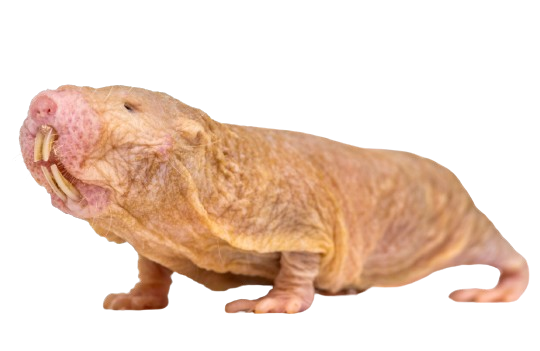
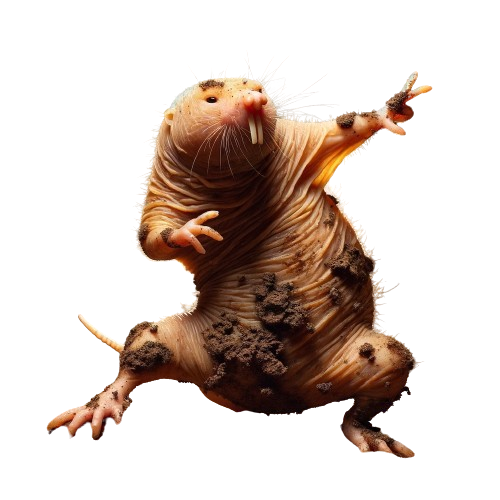
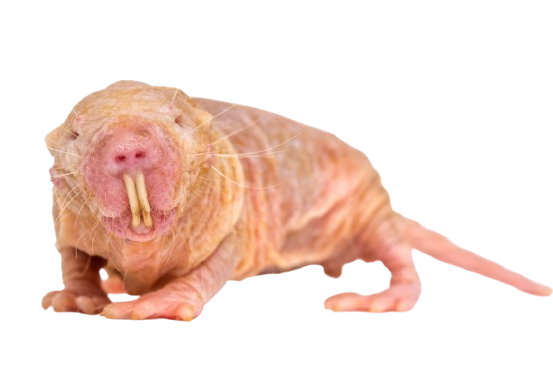
One of these is NOT like the others:
A comment on the use of AI images in science products
Some aspects of this game have been designed using AI generated content; including our middle fellow above with the dance moves. Unlike real naked mole-rats beside him, our AI-hybrid has no visible bottom incisors, a convex rather than concave snout, and… eyebrows? A lot of things went wrong.
As you follow Raadi in this knowledge translation game, I invite you to reflect on the role AI generated content does, can, and should play in science products.
Although they were too fantastical to make it in the game, please enjoy the below images that were created for this project.

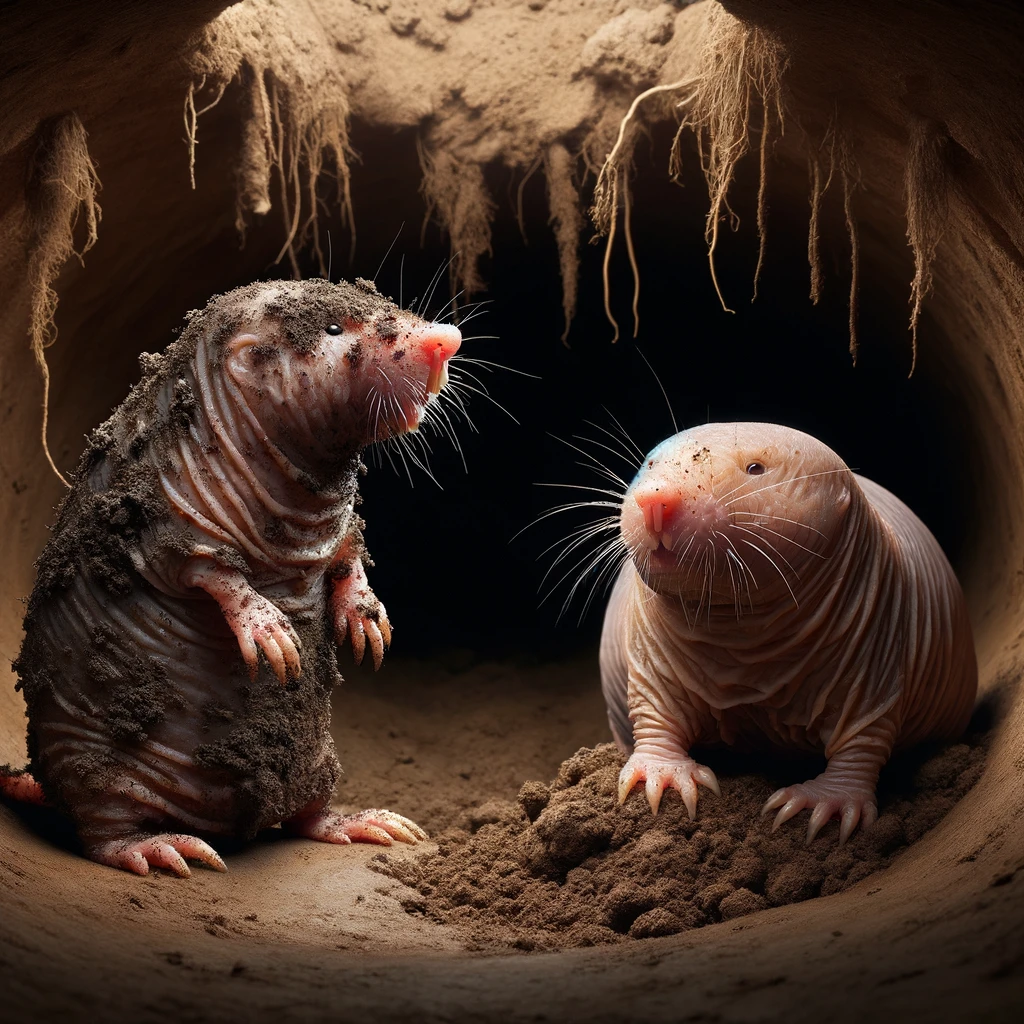
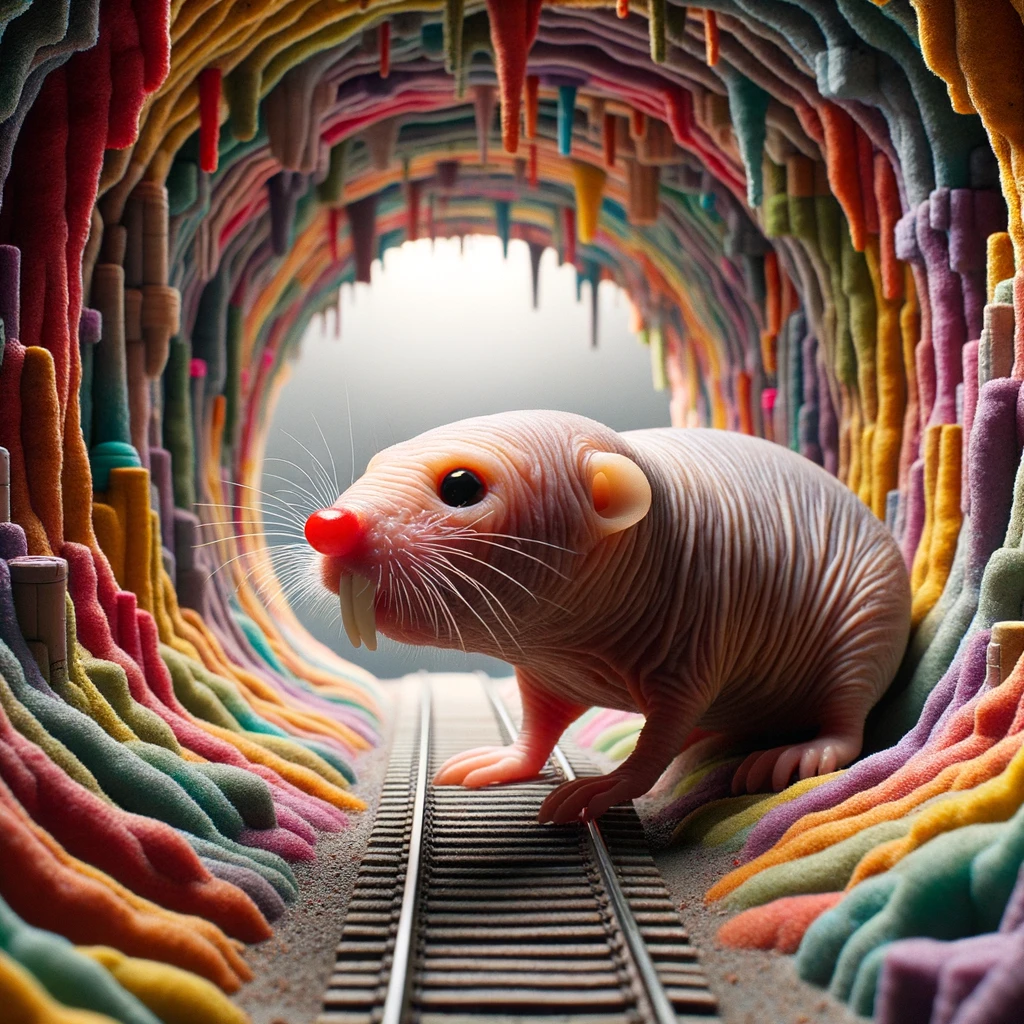
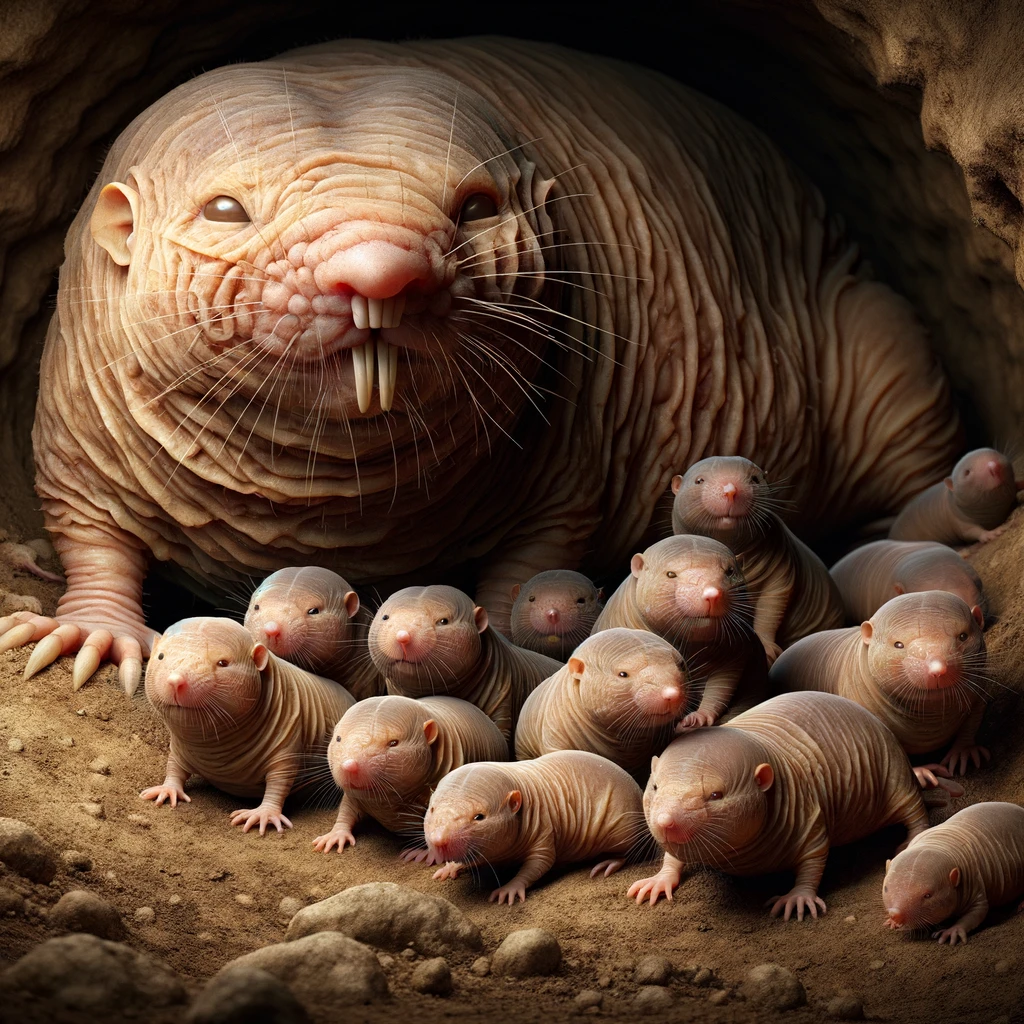
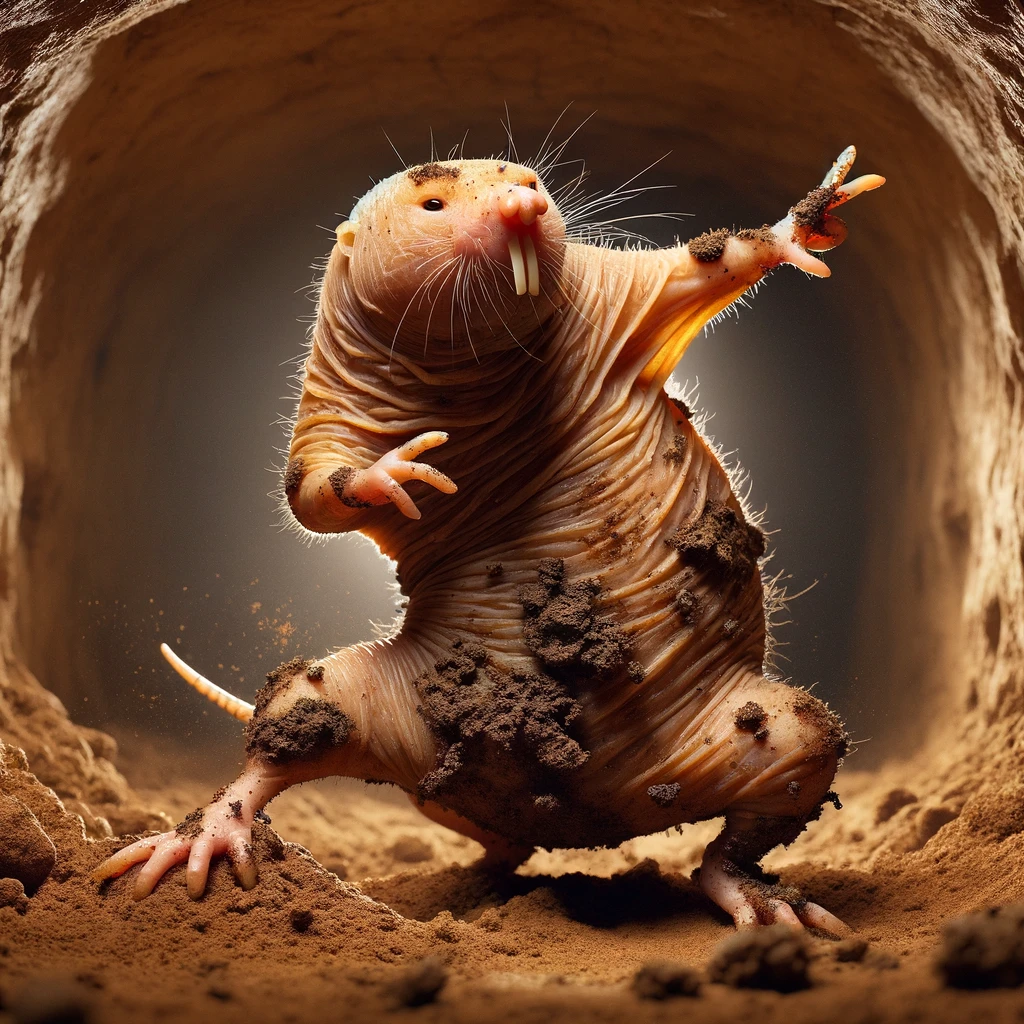
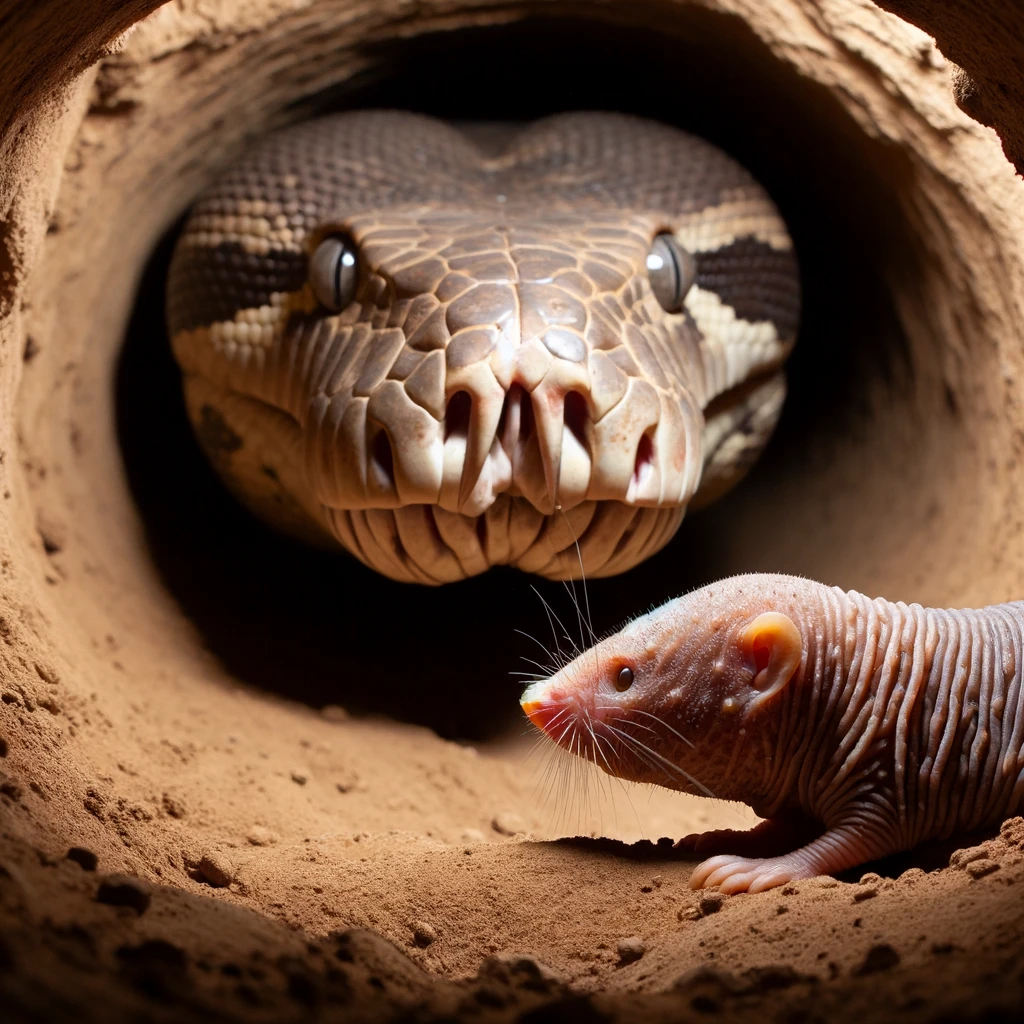
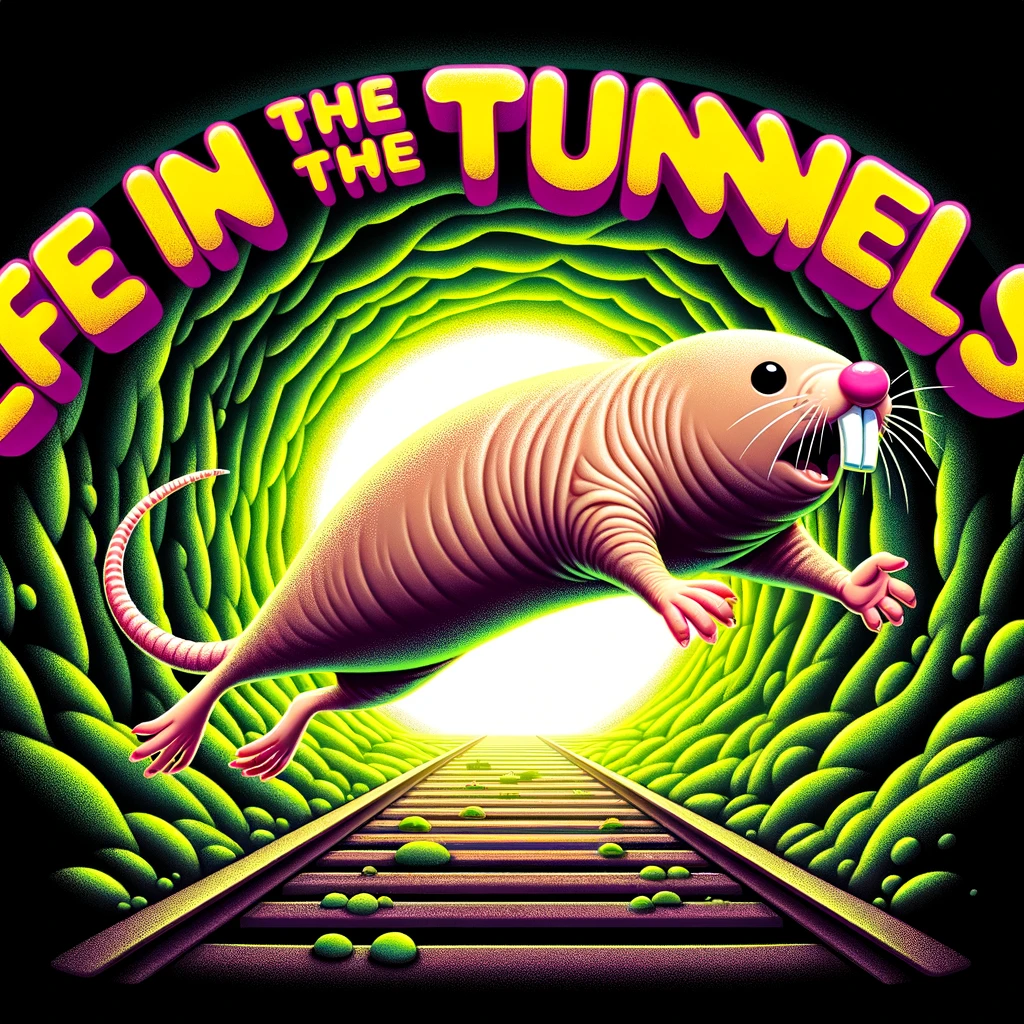
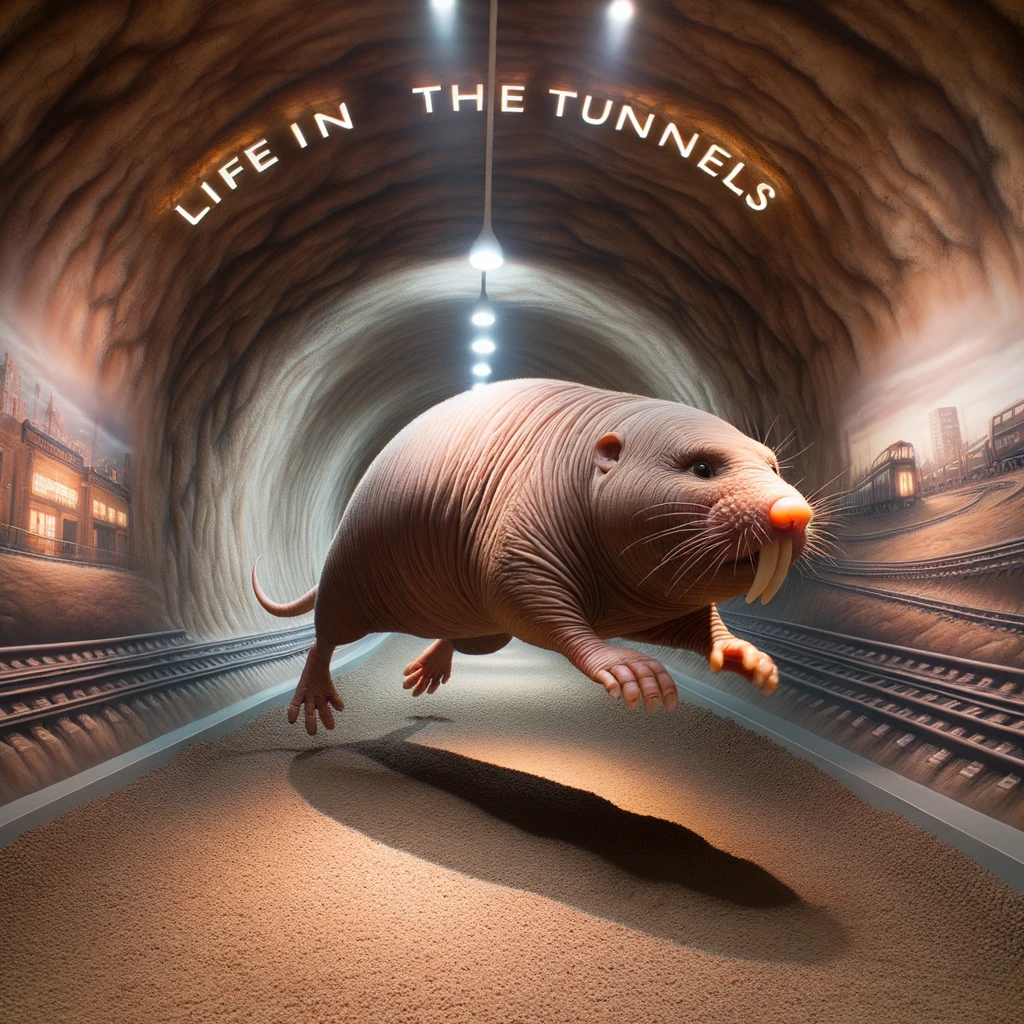
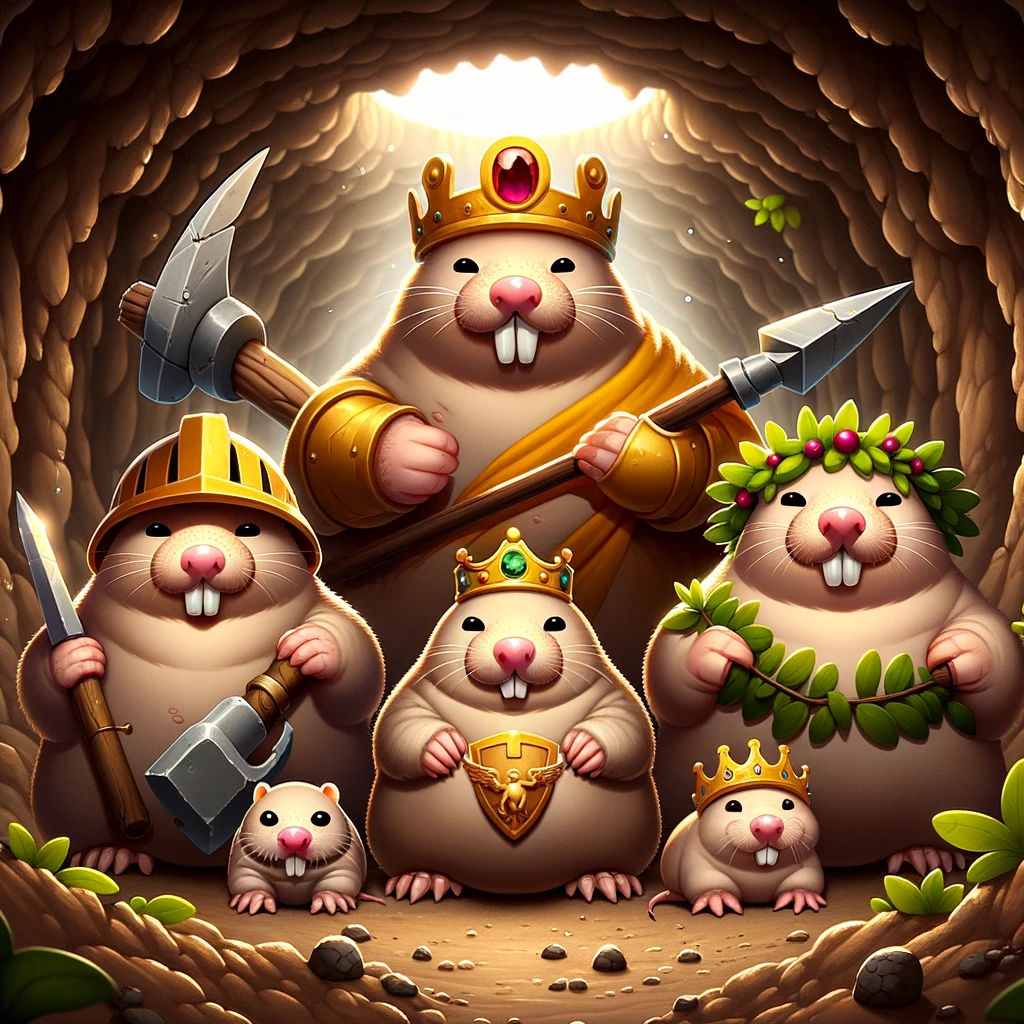
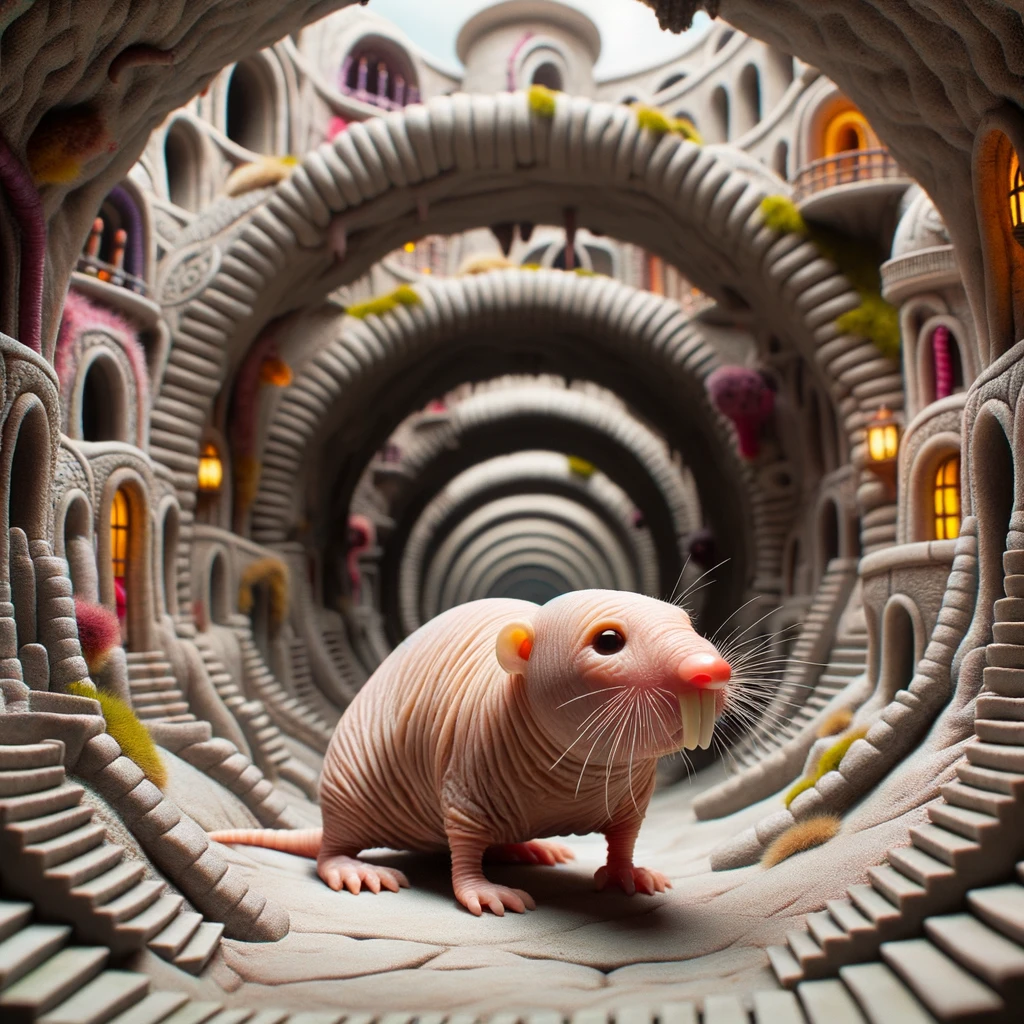


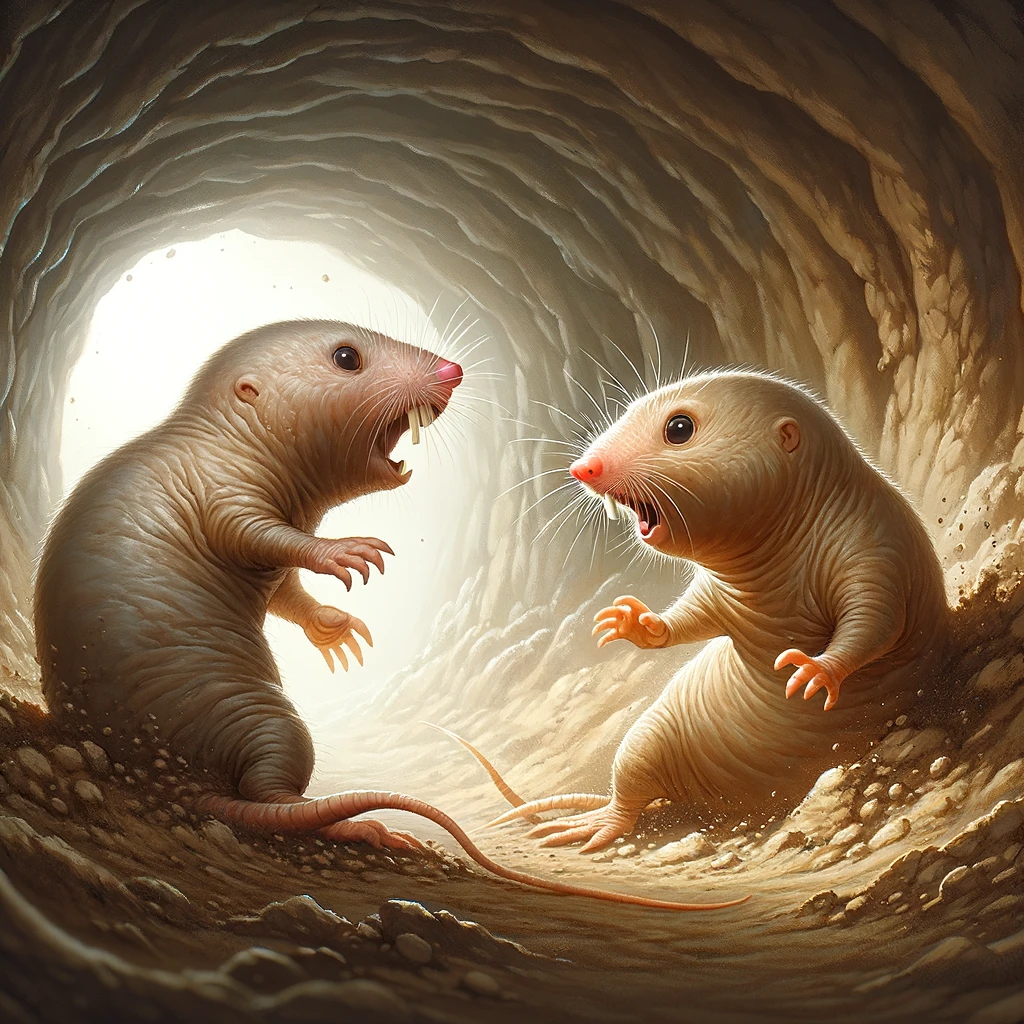
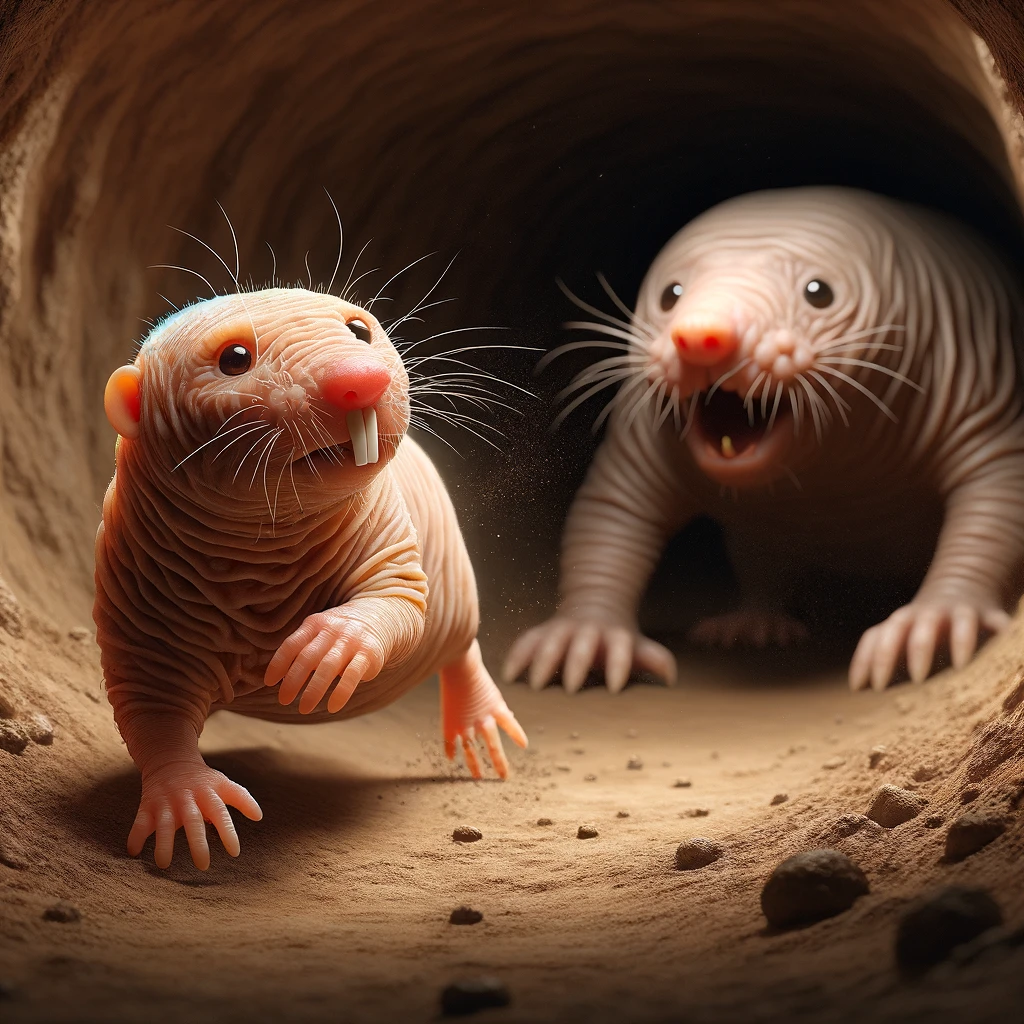
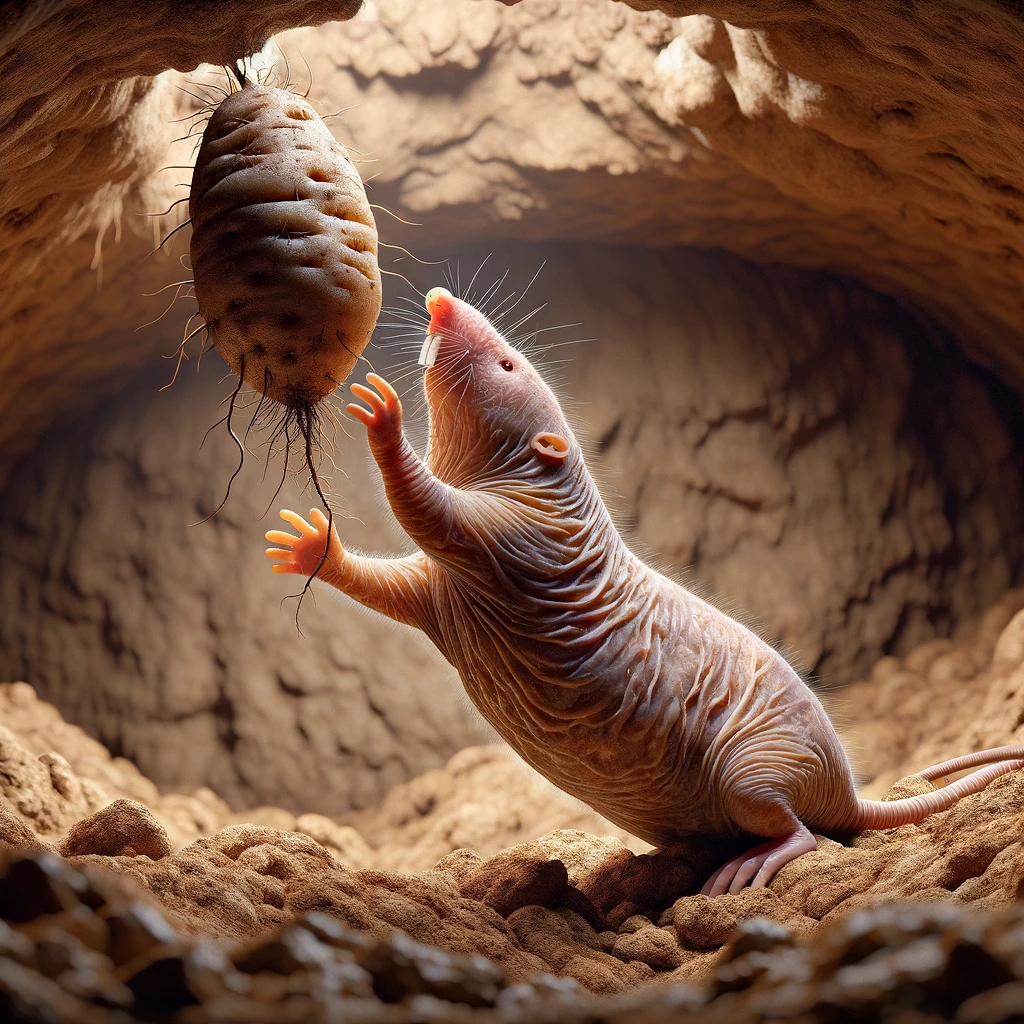


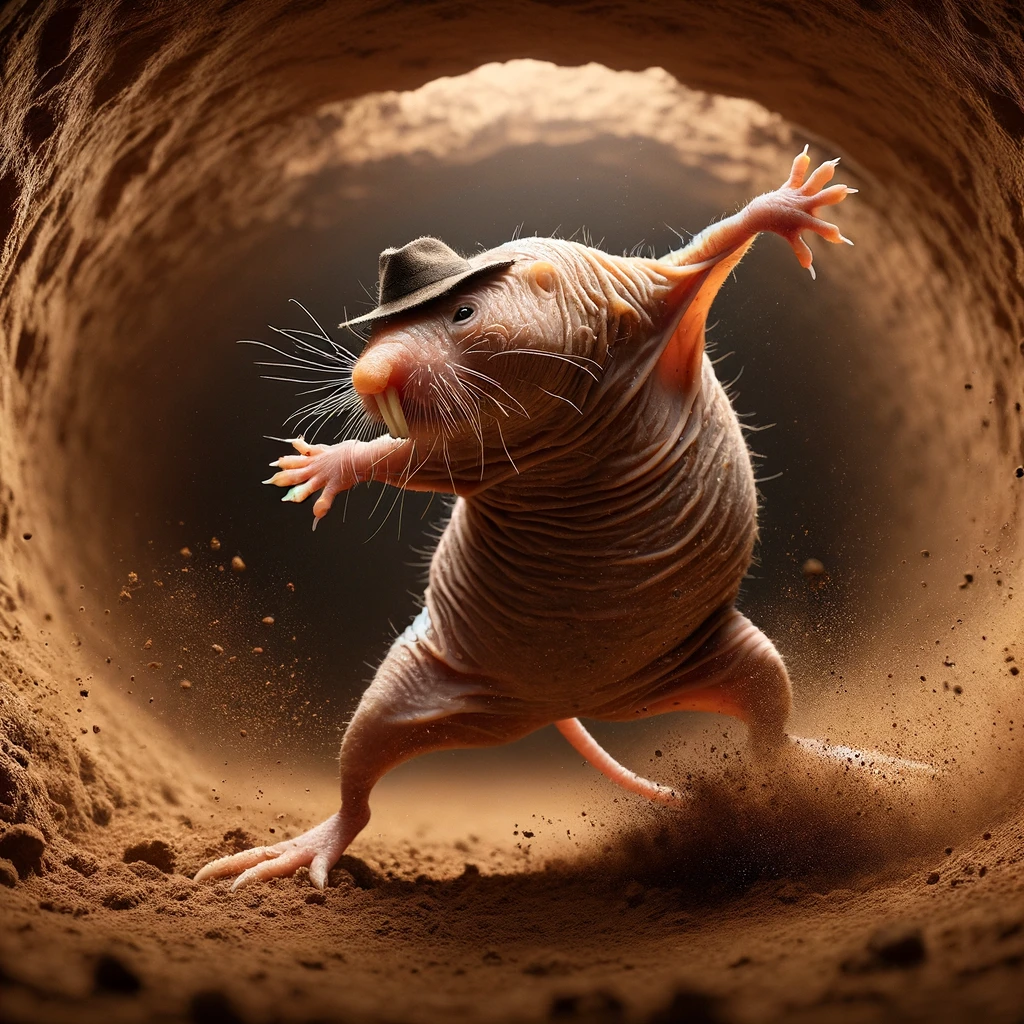


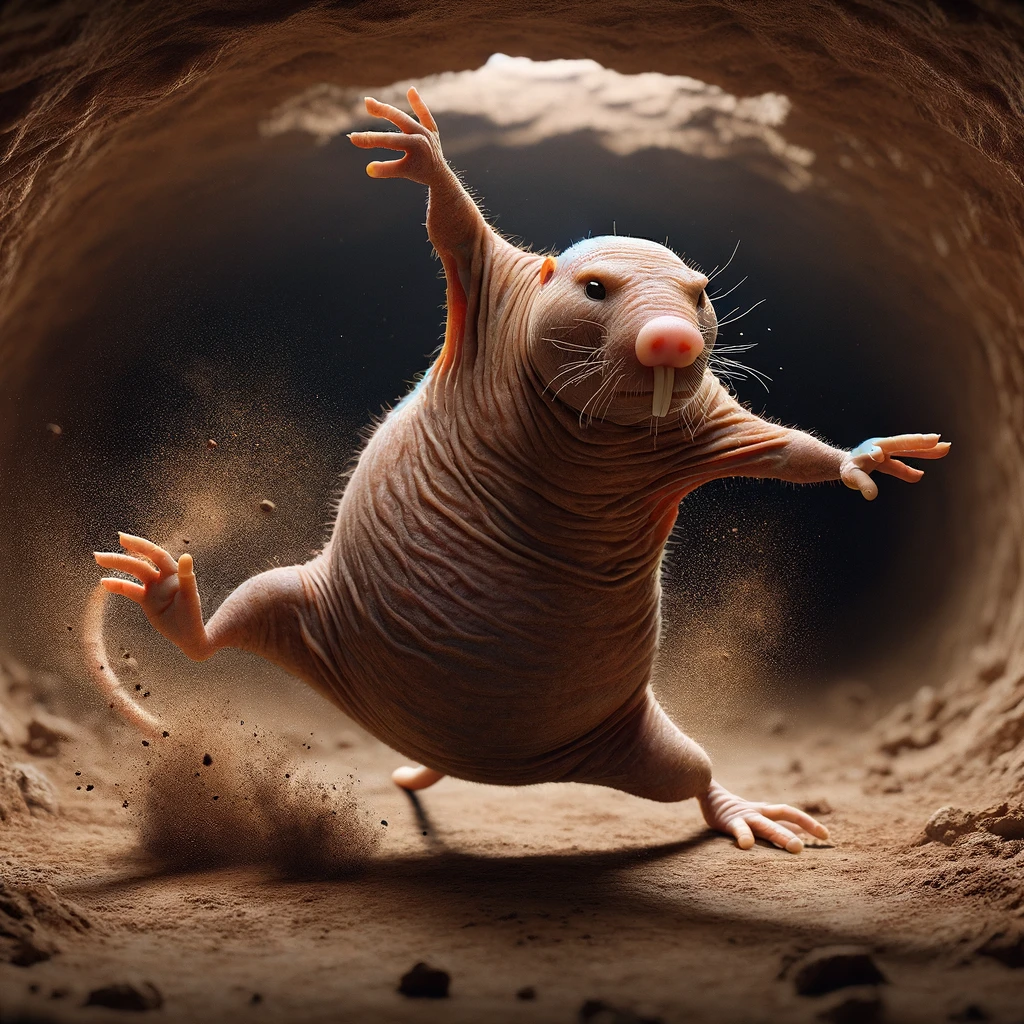
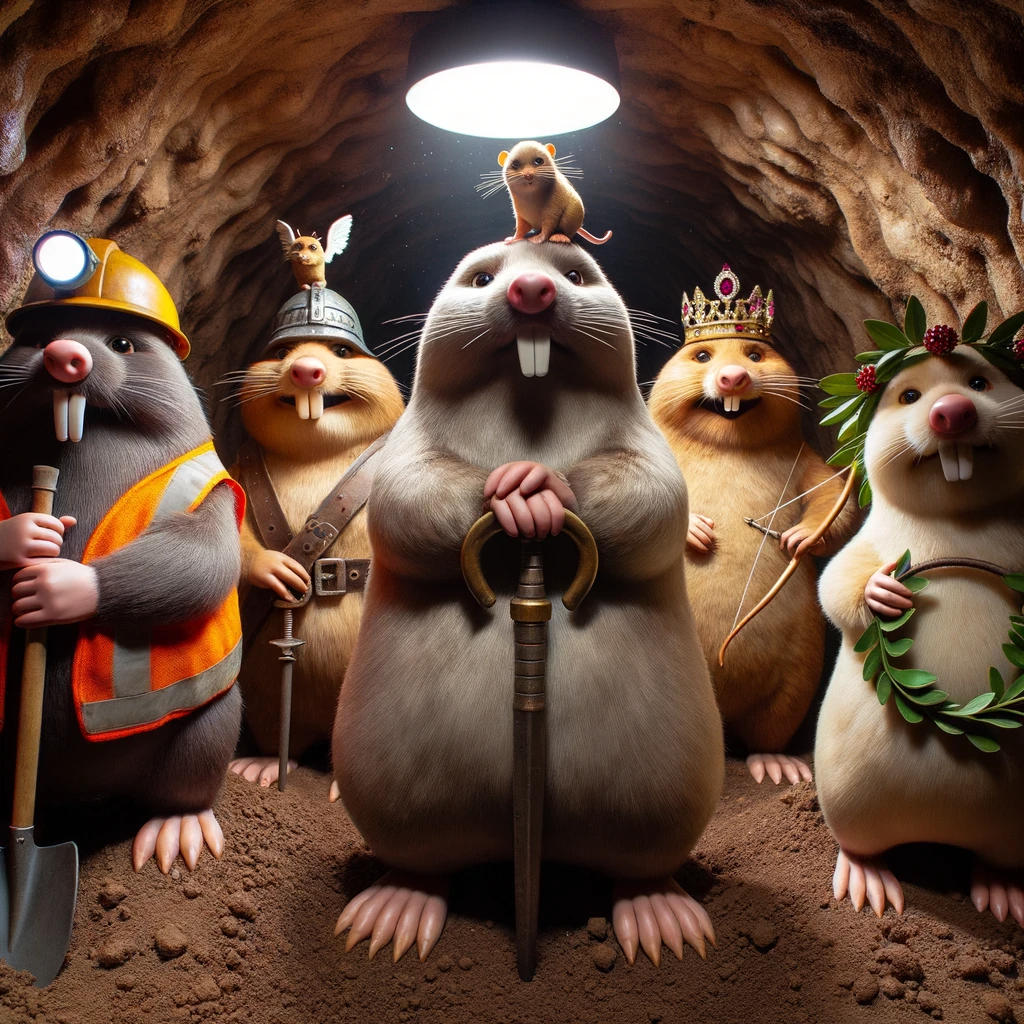
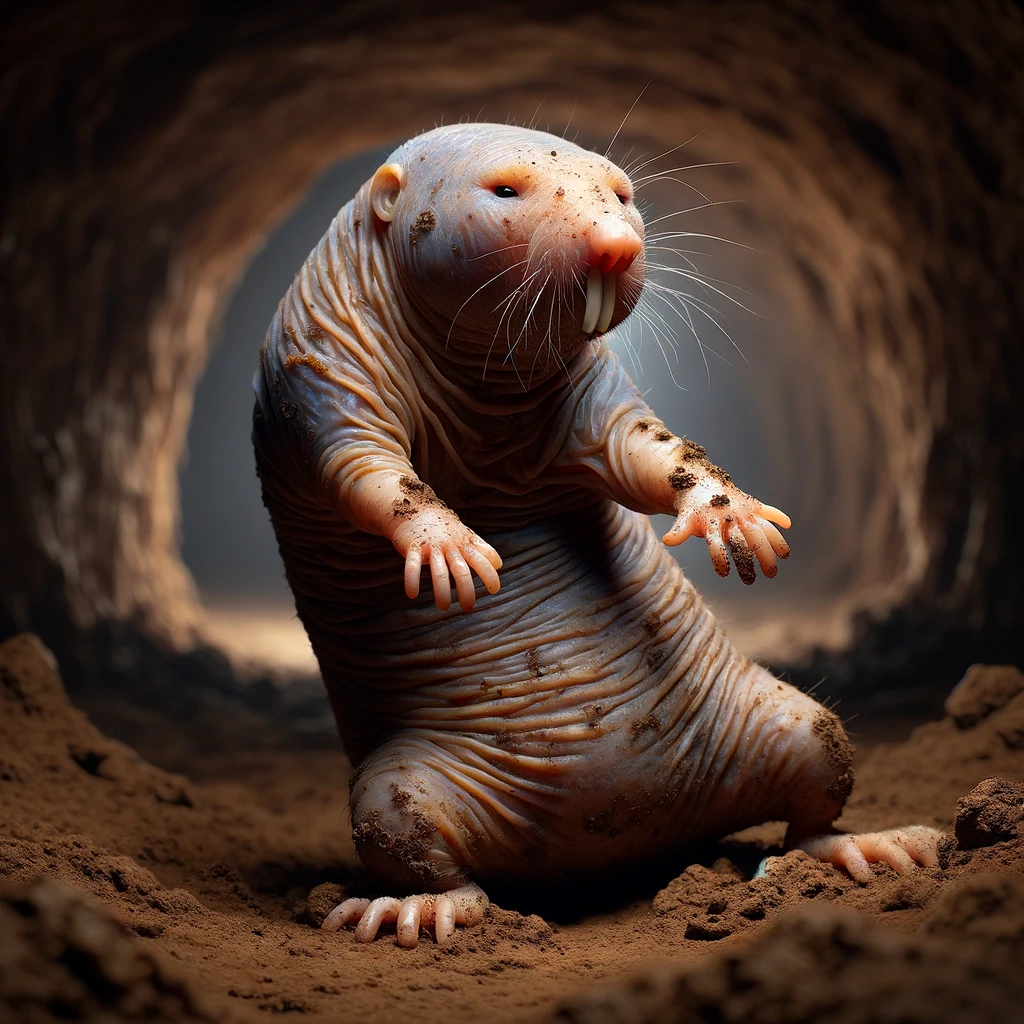
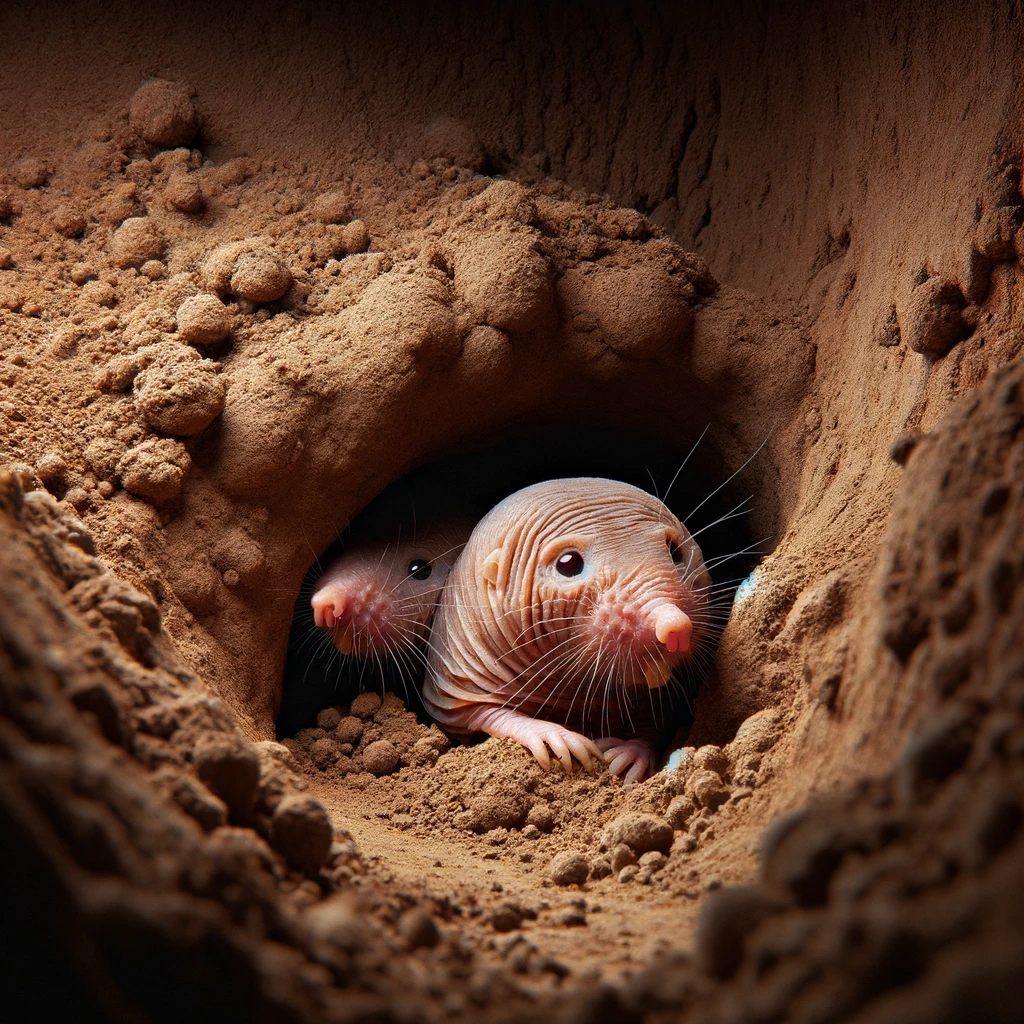
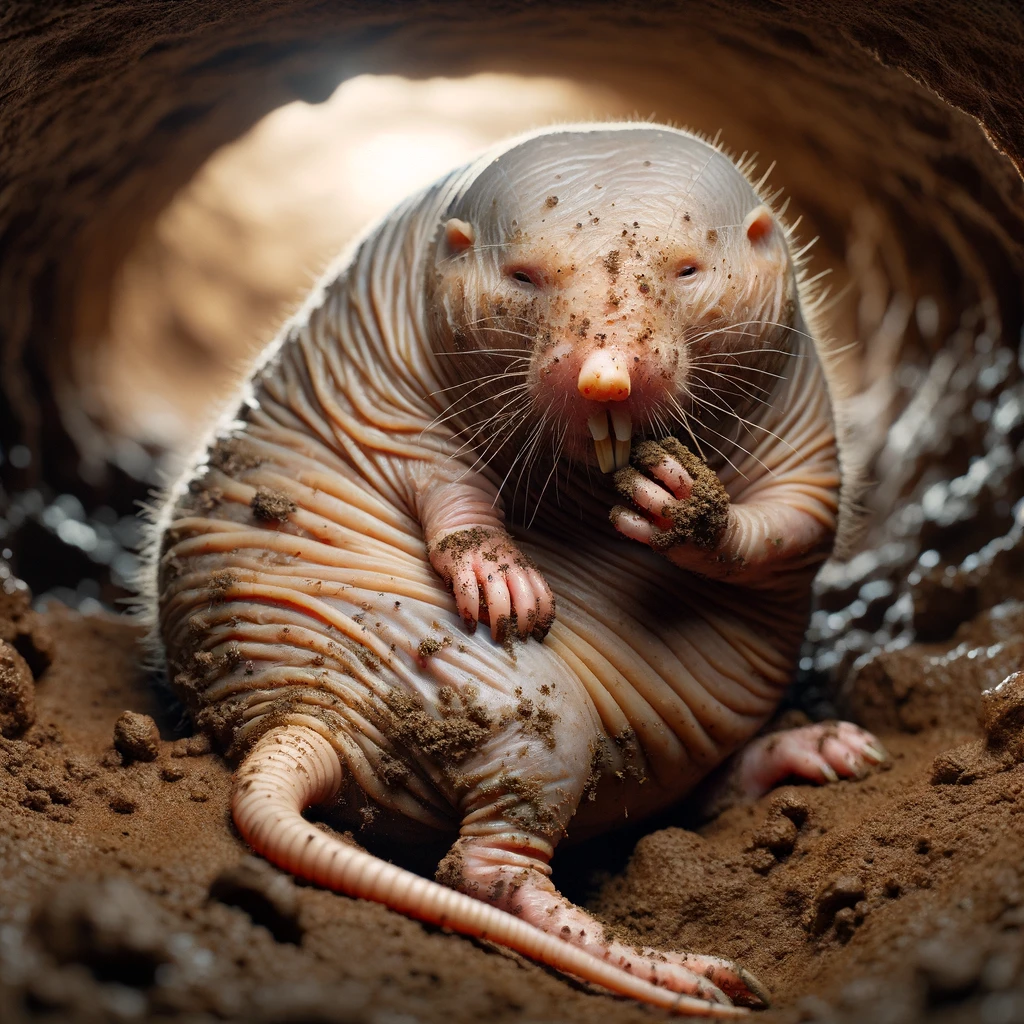
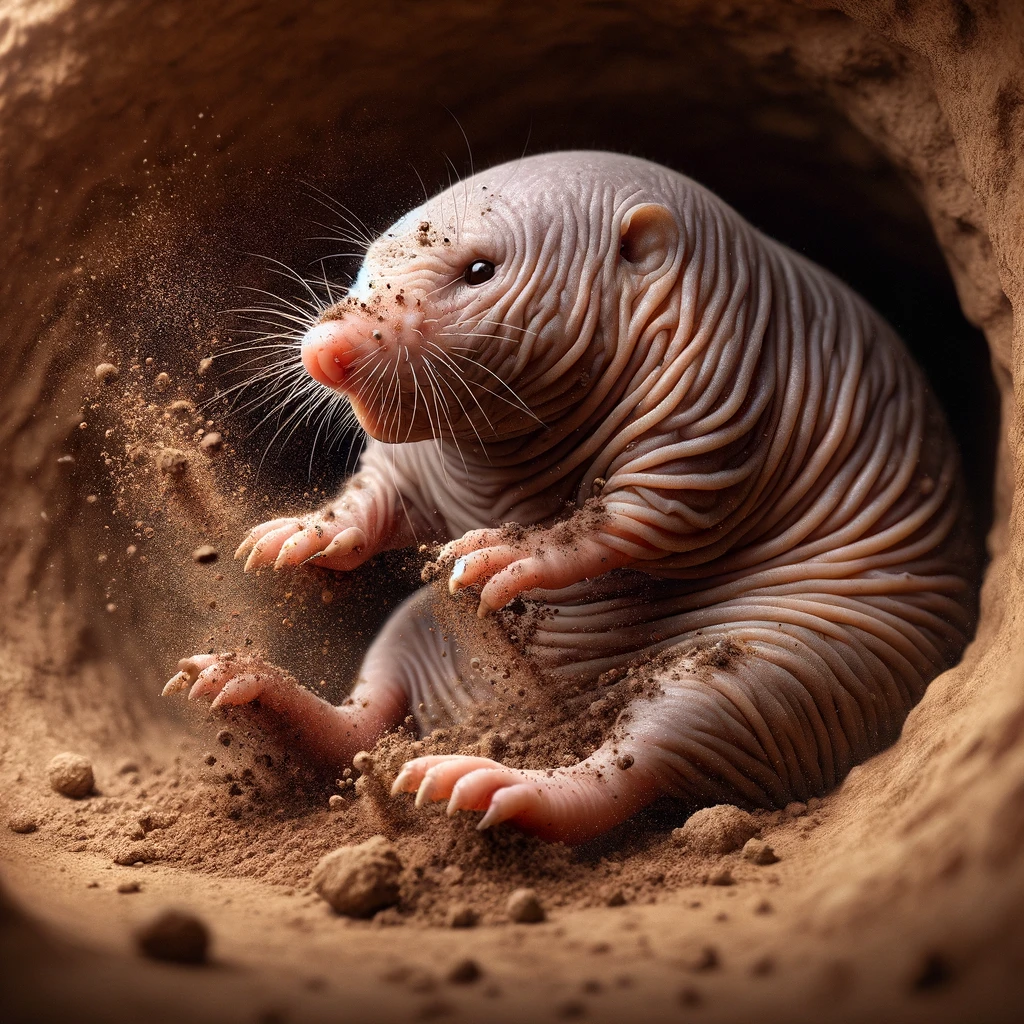
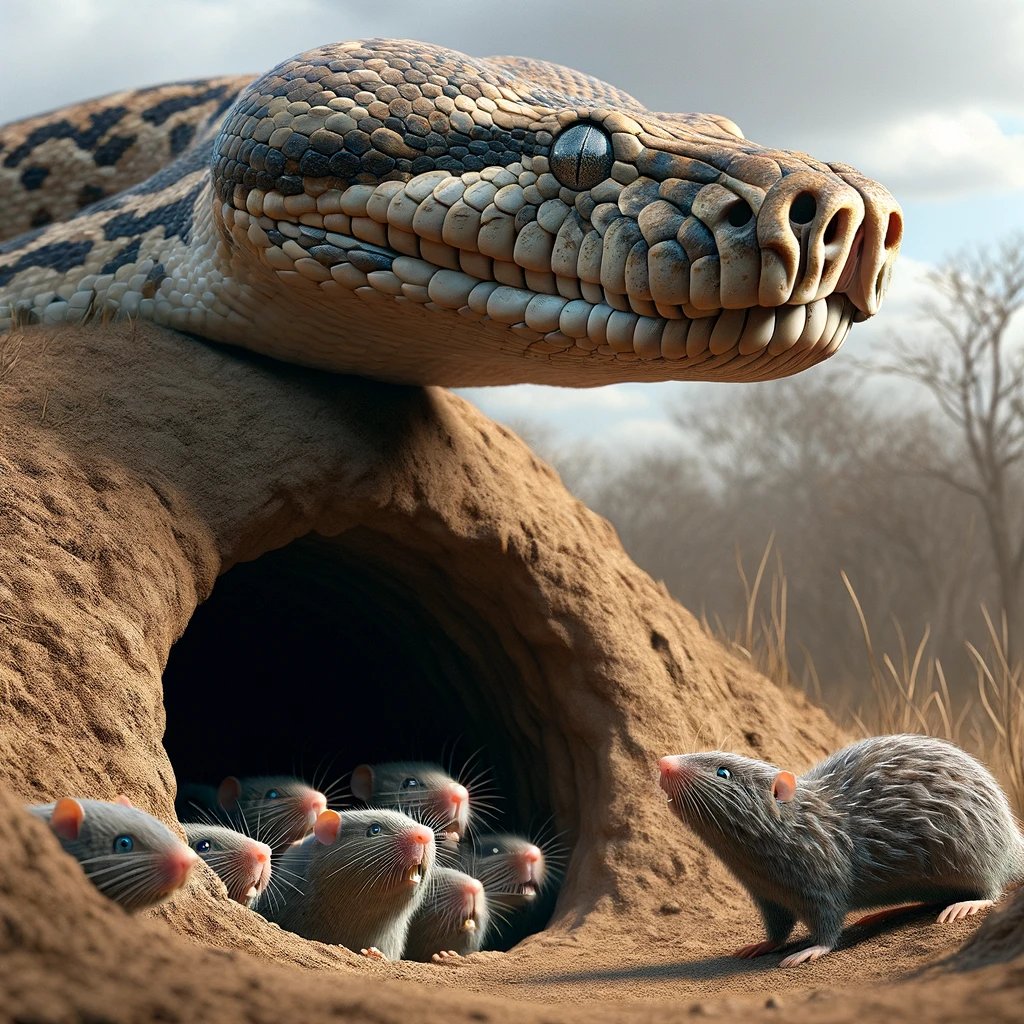
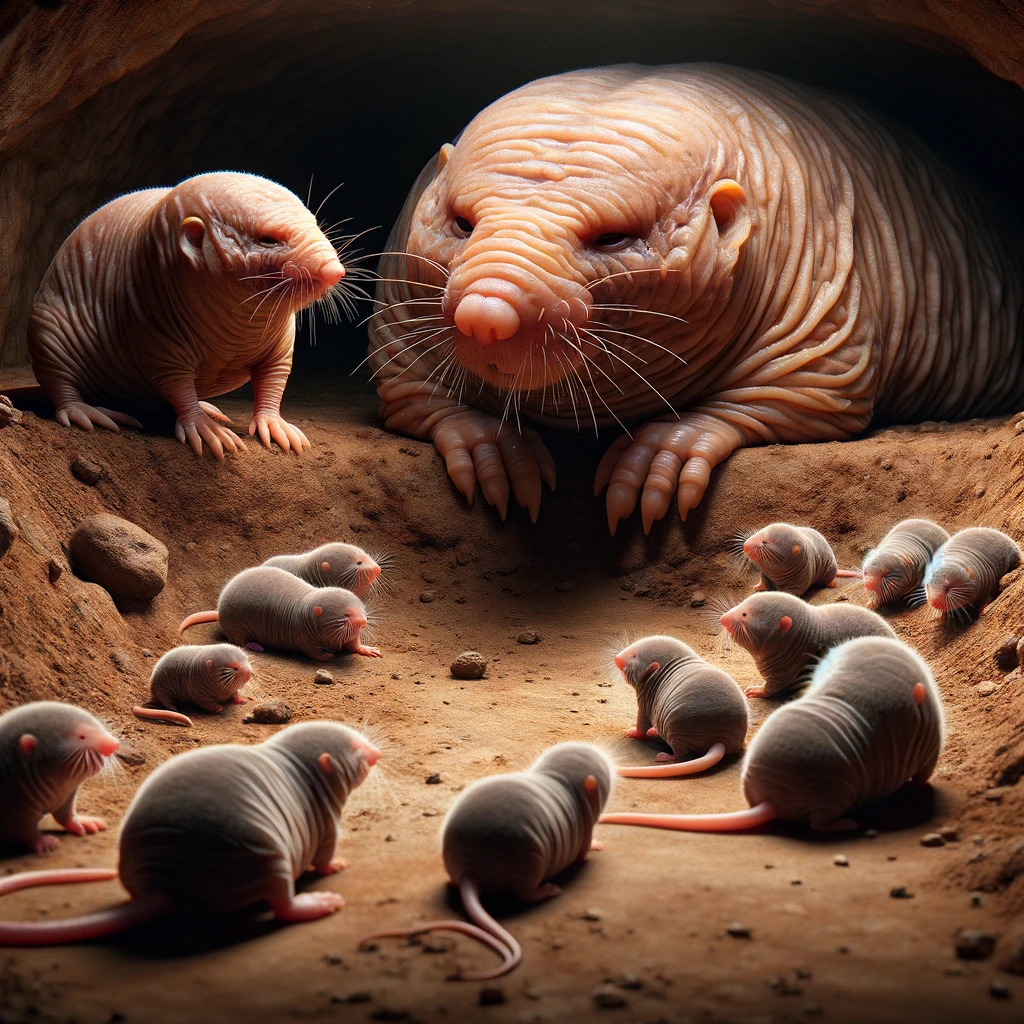
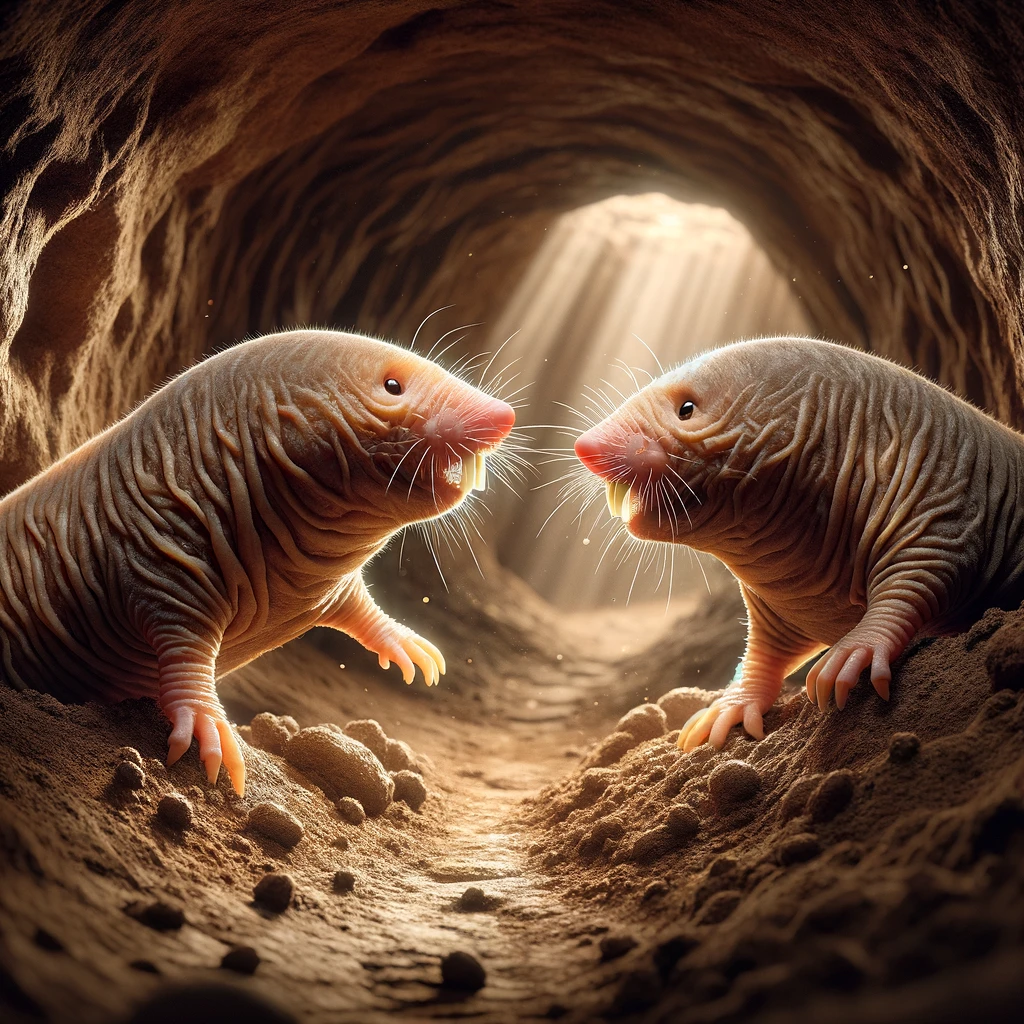
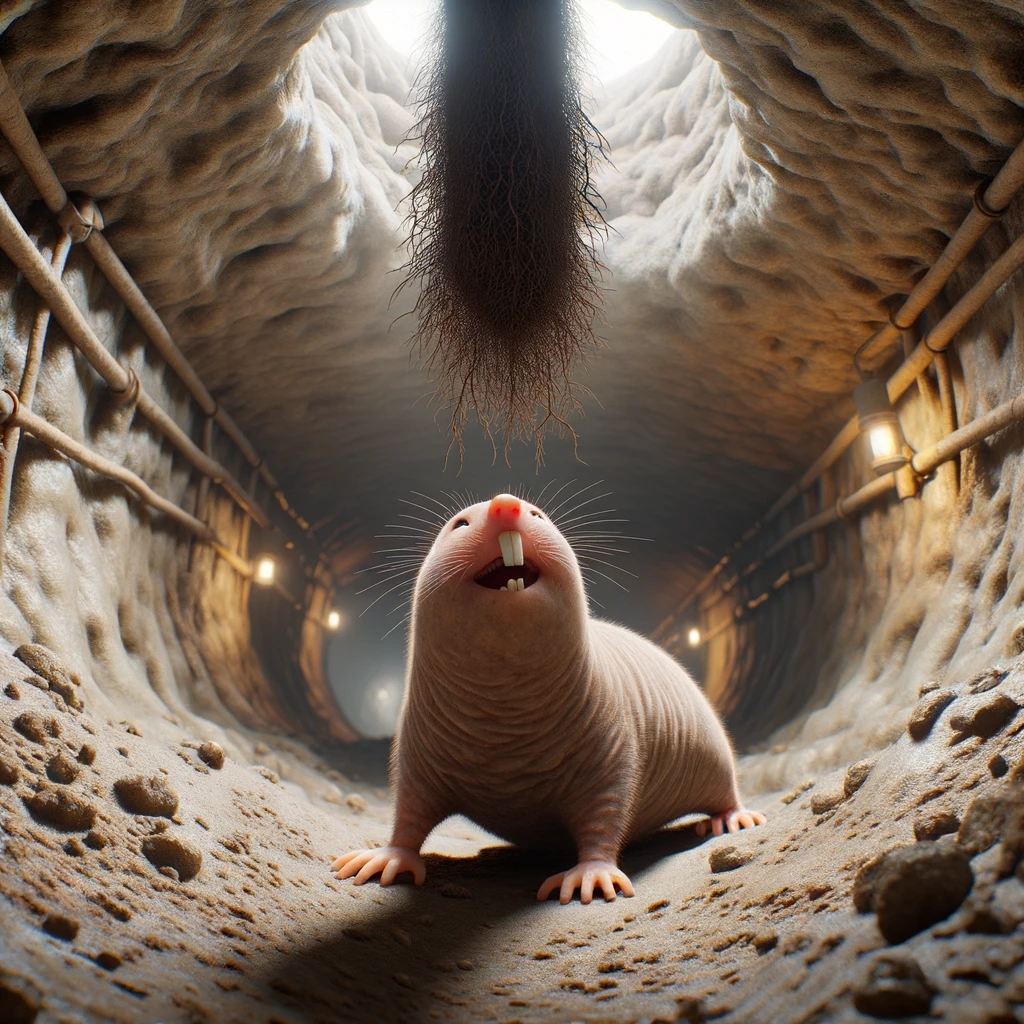
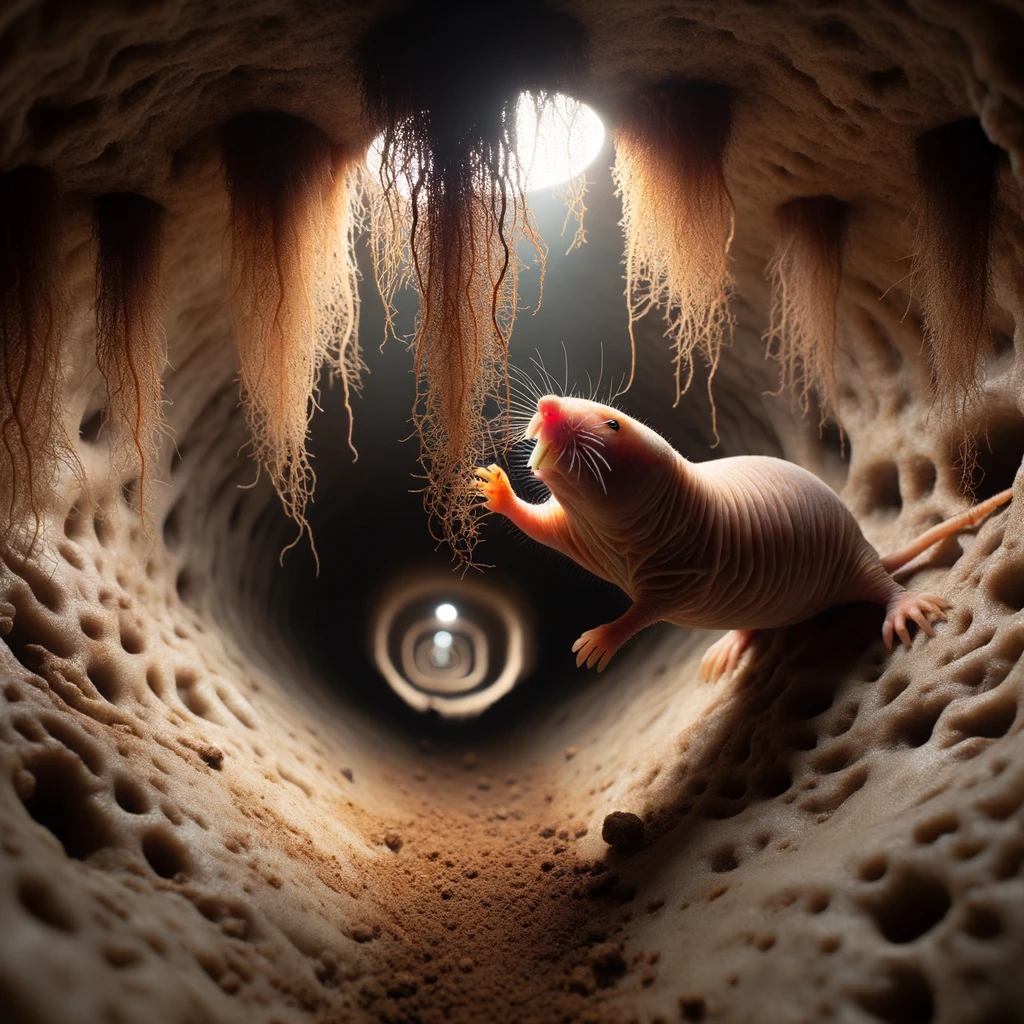
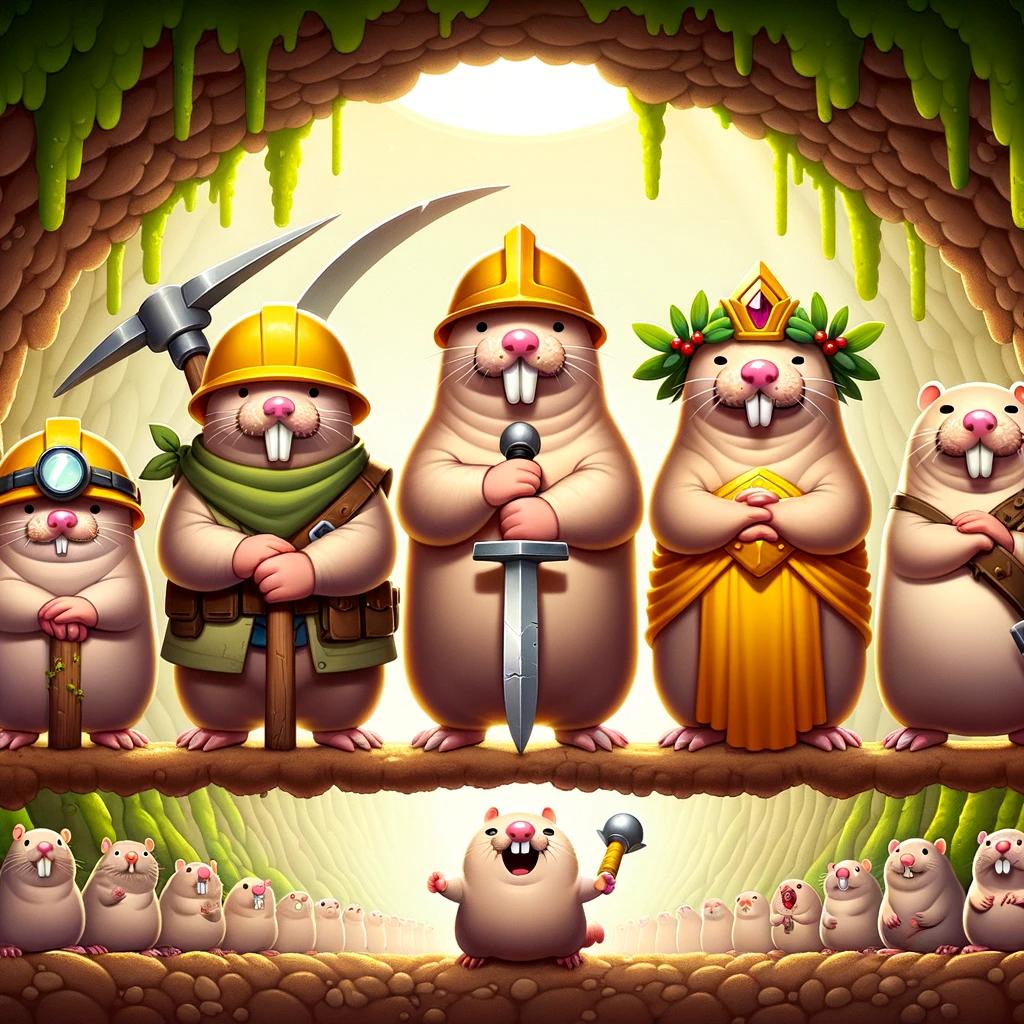
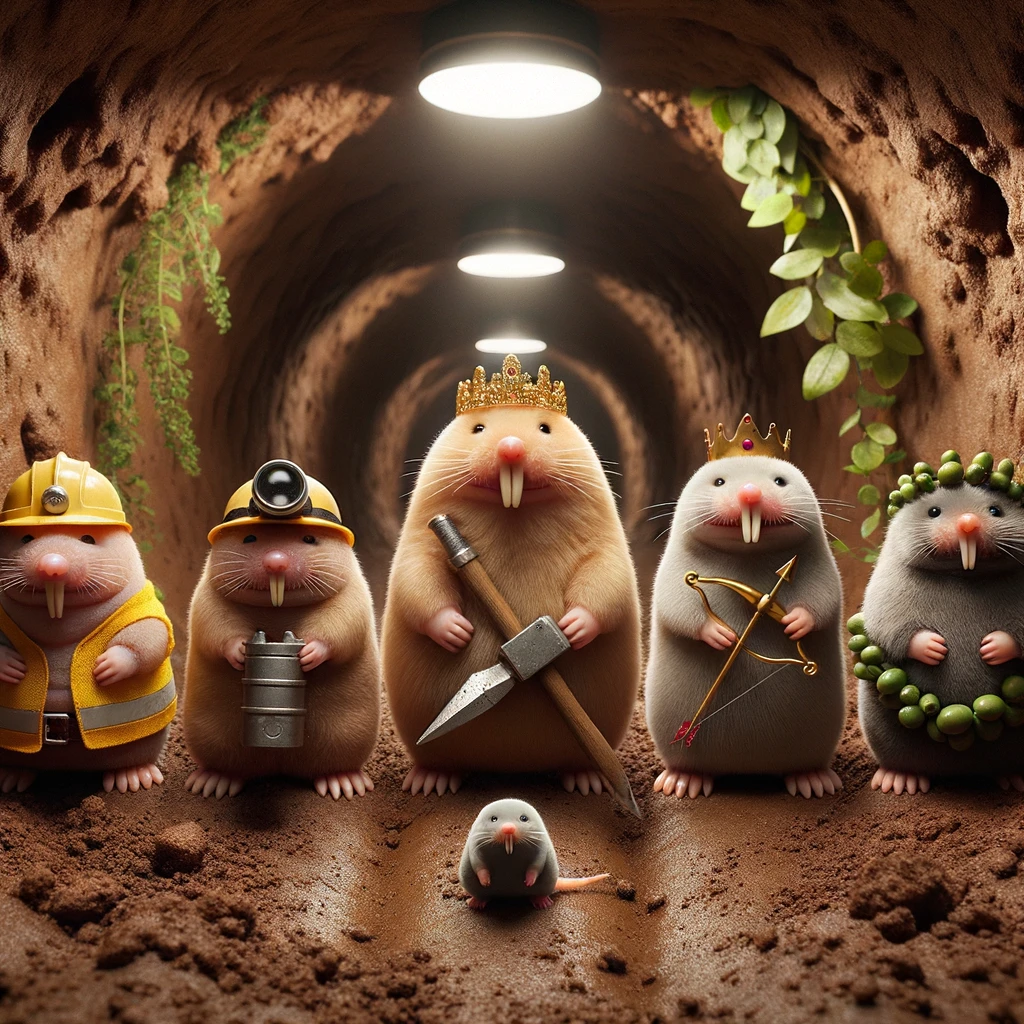
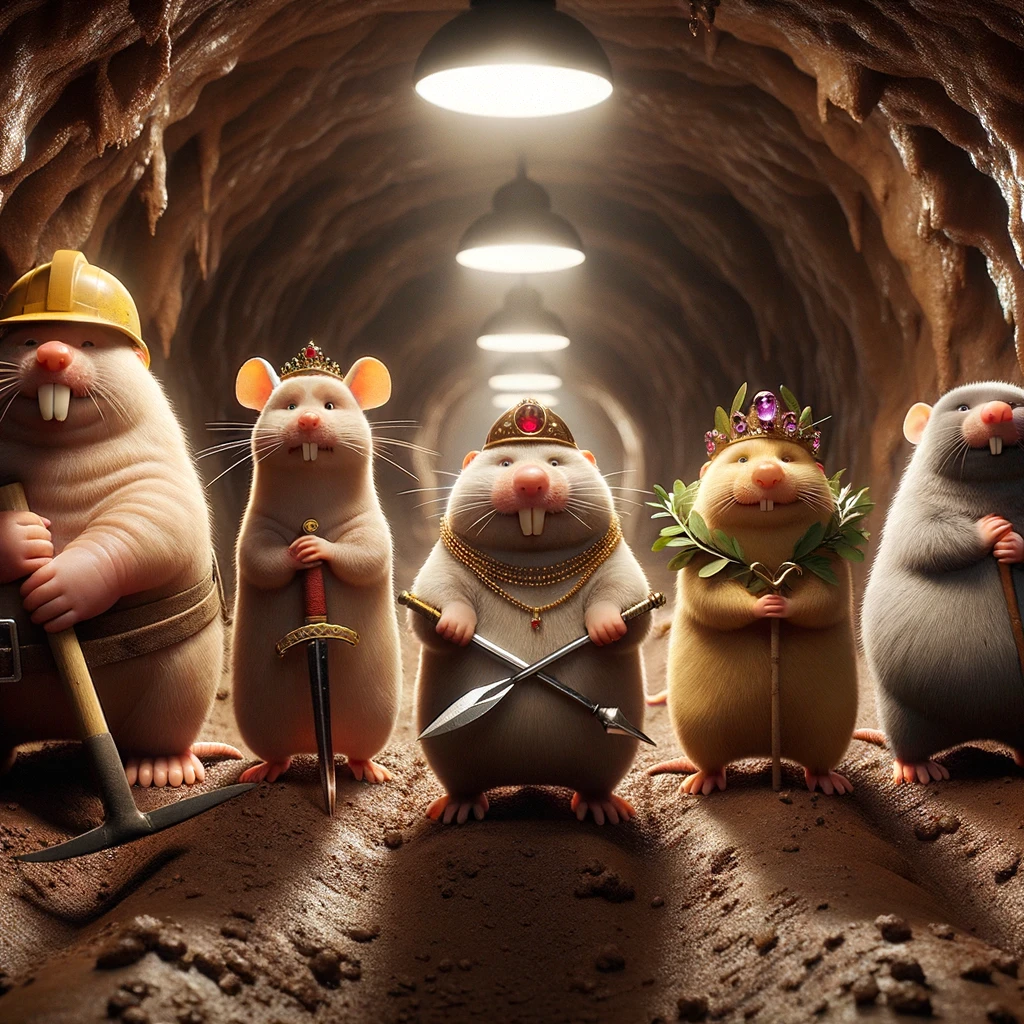
THE GAME
how to play
This game was designed in PowerPoint, for an optimal gaming experience, follow the below guidelines:
- Move through the game by clicking on signs, arrows, and boxes that pop up on the screen (avoid using the arrows under the slide).
- Before moving to the next scene, finish reading all text on the screen.
- If there seems to be nowhere to navigate, wait a moment, an animation is probably loading.
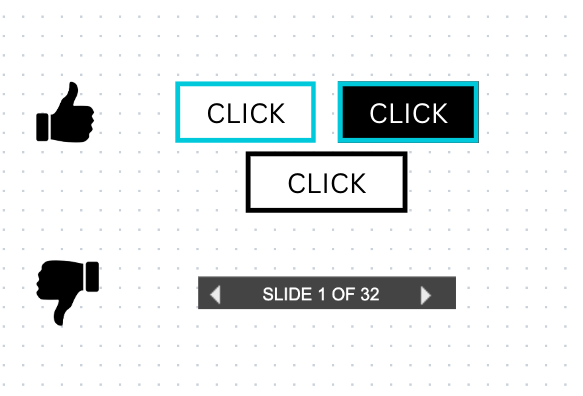
Explore the research
The Colony
Young naked mole-rats are called ‘pups’ and are born if litters of around 12-15.
(Interview with Dr. Edwards who works with NMRs in the lab)
Naked mole-rat life is organized around a matriarch Queen. She is of the highest status in the colony and protected by her subordinates (her sons and daughters; or offspring of the previous Queen)
Naked mole-rat soldiers are highly aggressive to non-colony members.
The Queen: breeds, births and breastfeeds pups for a months before workers assume alloparental care roles.
Breeding males: mate with the Queen.
Subordinate workers: forage for food, maintain the structure of the tunnels, defend against intruders (like snakes), and collectively care for the pups.
NMR colonies have strict hierarchies of social dominance that dictate interactions between members. Pass-overs occur when two naked mole-rats meet and the higher dominance individual passes over the lower dominance one. Dominance appears to be related to age and mass.
It has been suggested that some NMRs may be more inclined to leave their home colony than others. Although NMRs very rarely leave, this dispersing tendency may exist in the genome to occasionally introduce new genetic information to an otherwise highly inbred colony.
The Biology
Unfortunately for Raadi, his biological ancestors moved underground and lived in the dark and there was little evolutionary pressure for vision.
(Alexander, 1991; Catania and Remple, 2002)
Likely as a result, naked mole rats can’t see entire images but rather only make out changes in the intensity of light received.
Naked mole-rats:
- Age very little during their adult lives
- Rarely develop cancers
- Experience little disease
- And can live longer than many larger rodents like squirrels, beavers, and capybaras (even though lifespan is usually a function of body size.)
- One naked mole-rat holds the record for longet living rodent: 28 years!
(Buffenstein and Jarvis, 2002)
The Mole-ratunculus is a visual representation of how much information the naked mole-rat brain gets from each body part.
The four front teeth and the sensory whiskers (vibrissae) are overrepresented in the brain which means that NMRs rely a lot on sensory information from these body parts.
Naked mole-rats engage in coprophagia, the re-ingestion of digested material (feces).
(Interview with Dr. Edwards who works with NMRs in the lab)
Olfaction (the sense of smell) is central to the social cognition and working tasks in the colony for NMRs.
The Ecology
Naked mole-rats are found in East Africa, mainly in Ethiopia, Somalia, Djibouti, and Kenya.
Naked mole rats live in the semi-arid grasslands under acacia trees, grass, and shrubbery.
(Smithsonian National Zoo and Conservational Biology Institute)
The tunnel system of a naked-mole rat colony has been observed to span 5km in the wild. These are some of the longest rodent-maintained tunnels in the world.
Naked mole-rats are well adapted to living in the hypoxic (low oxygen) and hypercapnic (high carbon-dioxide) conditions of a crammed tunnel-system with many individuals
Naked mole-rats are predated by snakes that try to enter their burrows, primarily the Rufous beaked snake and the Kenyan sand boa native to the savannahs and grasslands in East Africa where naked mole-rats live.
Naked mole-rats get their nutrients and water from eating roots and tubers that the colony workers gather by tunnel access. They do not leave the colony to forage.
(Interview with Dr. Edwards who works with NMRs in the lab)
